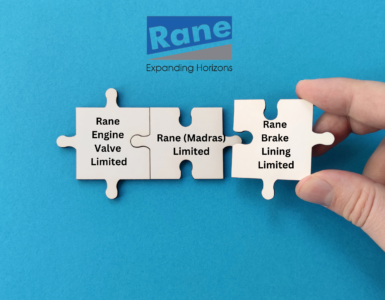Readers who have dealt with IT systems, vendors, processes will be surprised to read the words IT (Information Technology Systems) and Simple in the same sentence.
IT plays a very critical role and is all-pervasive. IT systems decide how things get done. At the same time, any change in IT systems is extremely difficult.
Many times this issue is considered from purely cost reduction perspective.
Rather than comparing these 2 sets of processes, could it be that there is a far bigger opportunity if one takes a wider view. Let us explore.
Companies have invested significant amount of money, time and effort in ERP implementations.
All agree that ERP is a very powerful system. It integrates all the critical functions within an organization viz., Production, Materials, Sales, Finance, Projects, Quality, etc. and provide tons of data for analytics. ERP has incredible power to store, transfer and retrieve data.
Given the power of ERP, companies should have seen significant improvements in Net Profit, ROI and Cash Flow. After the first 2 articles, readers know that we prefer the metrics Throughput (T), Investment (I) and Operating Expenses (OE) and the ratios T/OE, T/I. Of course, they are all connected and mean the same thing.
Do you know of any company which has bragged about their financial results and attributed it to ERP implementation? (Trivia for readers => Comment on this article in case you come across a listed company which has consistently increased T/OE and T/I over 5 year period)
Wait a minute, what kind of cause and effect is this? How can there be any direct connection between ERP implementation and T, T/OE, T/I increase? T, T/OE, T/I increase comes from building and capitalizing on Decisive Competitive Edge (DCE).
We know generally ERP implementation business cases are justified based on faster closure of accounts, quicker access to data, better visibility, inventory reduction, cost reduction; very rarely for building DCE for T, T/OE growth.
In order to see the connection, we have to turn to Dr. Eliyahu Goldratt’s Power of technology questions. These questions help us analyse any technology.
Let us apply these questions to ERP.
- What is the real power of ERP technology?
- Store data, transfer data between silos and retrieve data at amazing speeds.
- What limitation does this technology diminish?
- Necessity of any manager is to make decisions without having all the relevant data. Managers at all levels have to make decisions on daily basis. For almost all decisions at least part of the relevant data is generated in another silo and therefore the decision has to be made without all the relevant data.If ERP overcomes such a critical limitation, how come it has not delivered significant bottom line results? With all the latest updated data available at the click of a button, quality of decision-making should improve by order of magnitude and by that the financial results. But we all know this has not happened. What could be the missing link?
The 3rd question is a real eye-opener and provides the missing link.
- What rules helped to accommodate the limitation?
- Companies existed before ERP was invented and found ways to accommodate the limitation. Pre-ERP decisions were based on local optima rules. Such kind of rules exist in all functions.
- For e.g. A department supervisor is asked to maximize efficiency/utilization of his resources (machines, people); every product is assigned cost based on cost which can be directly attributed to that product and allocated cost. This leads to product costing and product margin.These rules are definitely better than having no rules at all.Companies have invested/continue to invest in technology but have not asked/answered this question.
Two questions arise once we have new technology; what is the relevance of these rules now? If we continue to use these old rules in new technology will we get any benefit?
- What are the rules that should be used now?
Just recognizing the 3rd question is not sufficient. We need to define and implement new rules to replace local optima rules. What does it mean to implement new rules in production, supply chain/ distribution, projects, sales, finance? For e.g. in Production, we know that only one resource determines the rate of production (Bottleneck). In case the bottleneck resource is temporarily non-functional, it does not make sense for other resources to continue producing at the normal rate. This will only add to Work-in-progress with increasing flow. With ERP, this information is visible to all departments. How many companies manage their operations in this way? - In light of the change in rules what changes are required in the technology?
Answering the 5th question helps us to translate the new rules into ERP system. Coding these common sense rules into ERP is far simpler than all the complex changes made thus far. - How to cause the change?
This is the most important question. Why have so few companies adopted the above approach while investing in new technology? (Recommended Book => Necessary but not Sufficient)
Changing rules which are part of company DNA is not easy.
Companies constantly in the midst of whirlwind and urgencies do not have the time to step back and check the assumptions behind their operating rules. The problem is compounded as most managers have studied and practised these old rules at different organizations and have become experts.
IT vendors who provide ERP products and services will rightfully make the point that it is not in their ‘scope’ to check the old rules, design the new rules and worry about How to Cause the Change.
Companies who consume ERP products and services need to definitely worry about this.
M&A is a watershed event in life of many companies. Whatever be the rationale behind the M&A**, it is an opportunity for companies to check the operating rules underlying both the companies, design new rules and then decide IT systems are best suited to support these new rules.
In most cases, the new rules are quite simple and can be coded in any software.
M&A or no M&A, companies who want to build DCE of High Service levels with shorter lead times are advised to design and implement following procedures via ERP systems:
*We commonly come across companies who have invested significant amount of money in ERP, SCM, APO but run their critical planning processes via Excel spreadsheets). Many companies are now investing in new technologies under the SMAIC banner => Social media, Analytics, IoT, and Cloud.
M&A Critique readers who have a stake in these decisions are advised to apply the Power of Technology questions to derive real value from these IT investments.
(**we subscribe to the Decisive Diligence approach written in Oct M&A Critique issue)
This article is written by Mr. Aniruddha Joshi. He is a Principal Consultant with Avenir Management Consulting India Firm.




